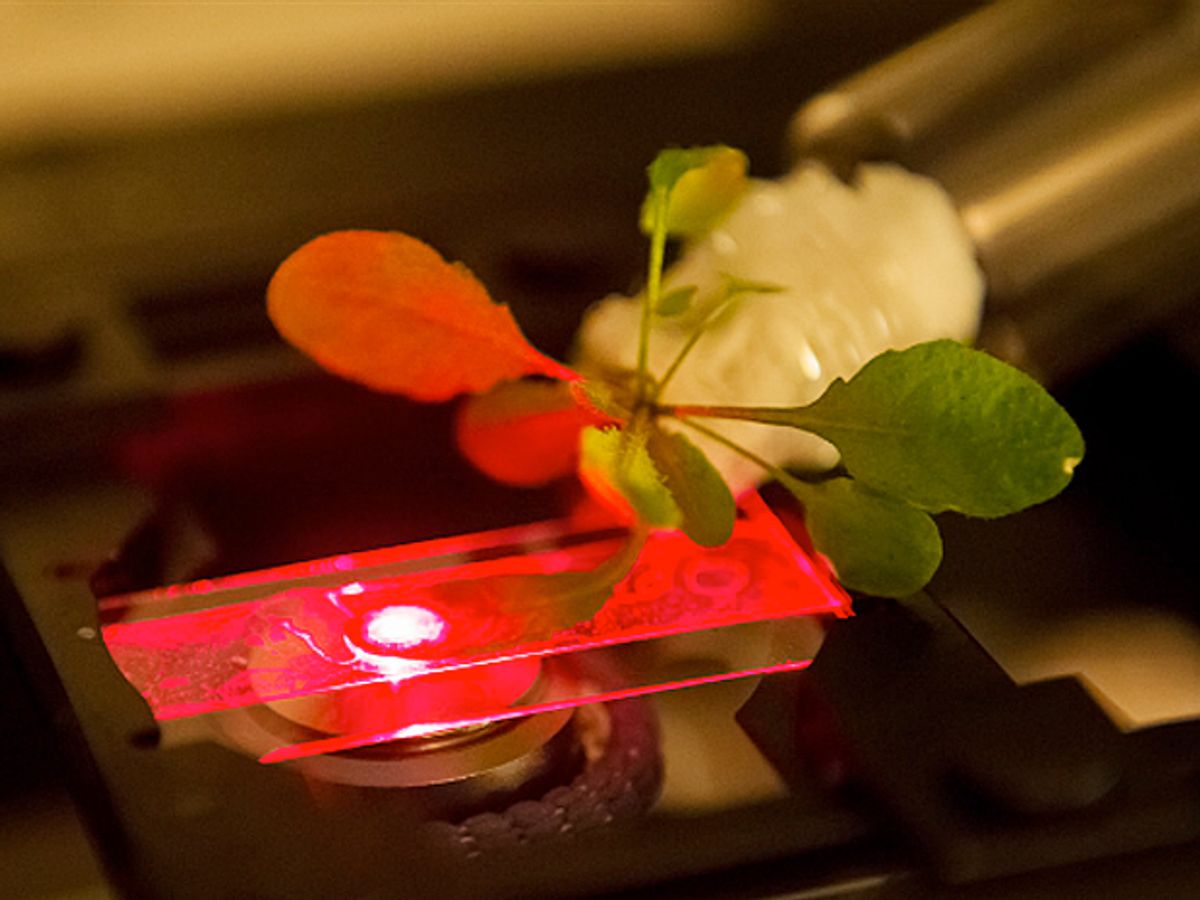Consider for a moment the magical work done by chloroplasts. These are the plant organelles that absorb light from the sun, convert it into chemical energy and ultimately use it as a building block for synthesizing glucose, the primary source of fuel for both plants and animals. While their achievement has the appearance of alchemy, like every other organelle, these chloroplasts are but little machines. Now, it seems they’re due for an upgrade.
In a paper published yesterday in the journal Nature Materials, chemical engineers at the Massachusetts Institute of Technology report that when injected with single-walled carbon nanotubes (SWNTs), chloroplasts can be coaxed to photosynthesize more efficiently than normal.
The first phase of photosynthesis, referred to commonly as the “light reactions,” involves excitation of pigments and the subsequent transport of electrons between multiple photosystems. The researchers used this flow of electrons as a measurement for the rate of photosynthesis and found that when the nanotubes were present the flow increased by 49 percent.
Chlorophyll, the pigment normally found in chloroplasts, can only absorb a small fraction of the light entering a plant, most of which resides in the 400 to 500-nanometer and 600 to 700-nanometer range. Although the researchers cannot yet offer an explanation for why carbon nanotubes would enhance the efficiency of chloroplasts, the team theorizes that it may be due to a broadening of this range. SWNTs are known to absorb light in the ultraviolet, visible, and near-infrared spectra.
The MIT engineers write:
“Improving photosynthetic efficiency may require extending the range of solar light absorption, particularly in the near-infrared spectral range, which is able to penetrate deeper into living organisms.”
They report having the most success with chloroplasts that had been removed from the plant. Under these circumstances, they were able to inject the nanotubes directly into the organelle.
In a separate experiment, the researchers sought to find a way to deliver nanotubes into a living plant. In order to do this, they developed a new technique called lipid exchange envelope penetration. Basically, they applied the nanotubes to underside of the leaf via a watery solution which is absorbed through tiny pores called stomata. The transfer across the fatty membrane of the chloroplast was made possible by coating the carbon nanotubes in negatively charged DNA.
When they introduced machinery into a living plant in this way, the chloroplasts received slightly less of a boost, photosynthesizing only 30 percent more efficiently than normal. But this delivery technique may itself be counted as a breakthrough.
With it, the researchers have tried packing plant cells with particles that protect it from the damaging effects of light exposure, and with another type of carbon nanotube that has been shown to be sensitive to nitric oxide. With such techniques, chemical engineers may one day develop plants that function as pollution detectors.
Indeed the researchers are arguing that their work establishes an entire new field of research, one they’re calling plant nanobionics.




